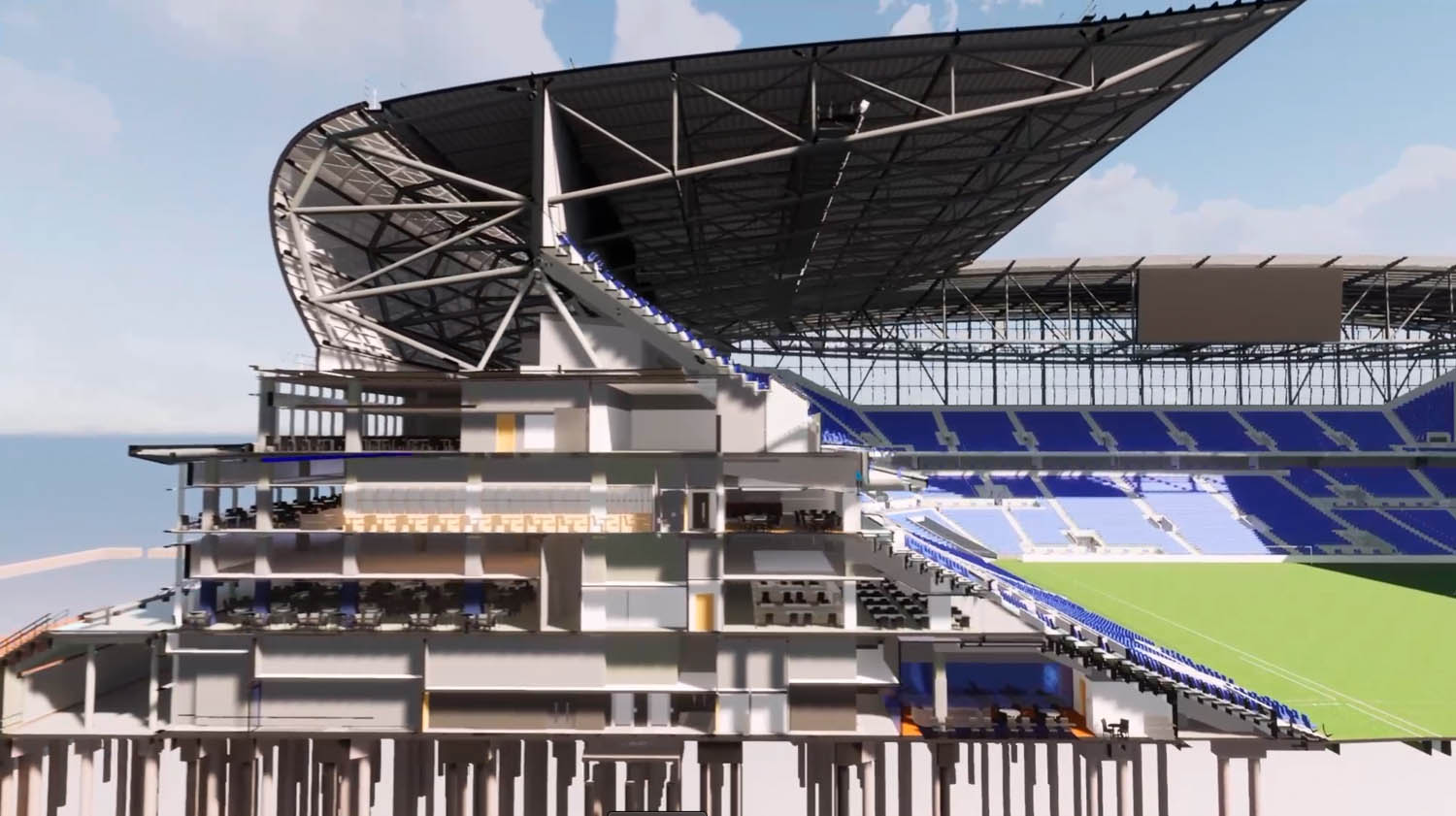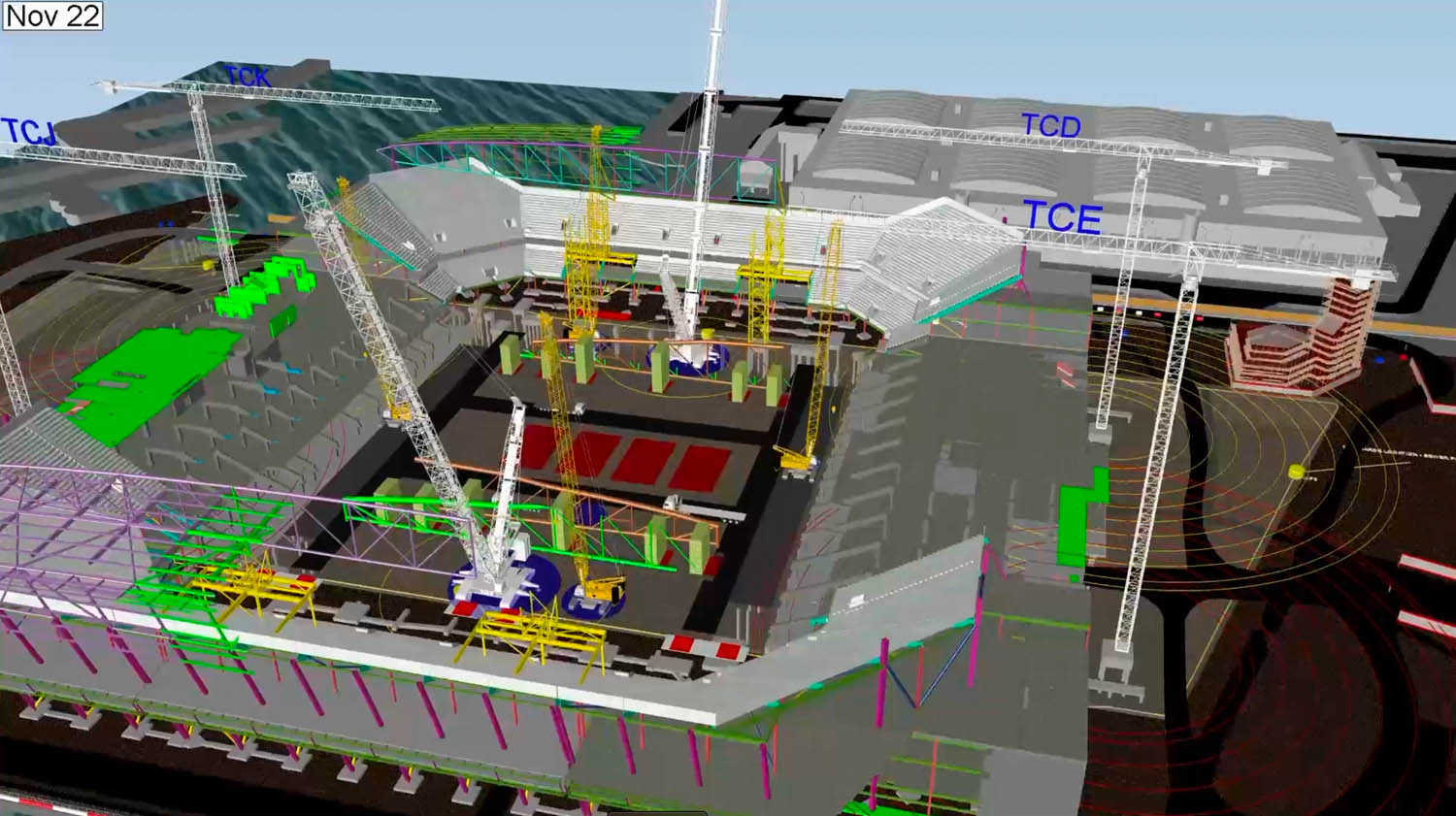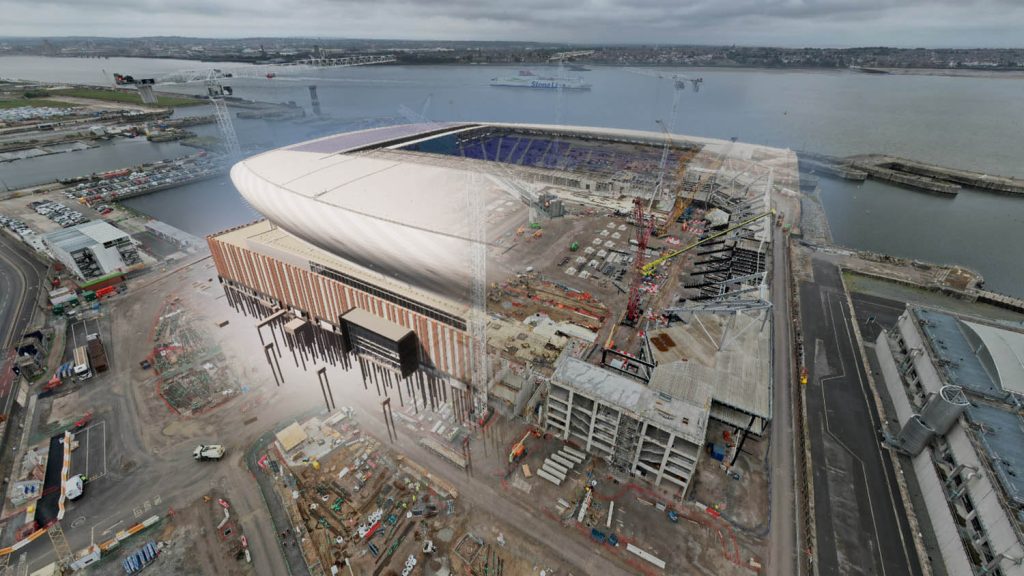Laing O’Rourke using Synchro to help mitigate risks on construction of 52,888-seater arena
Laing O’Rourke is using 4D construction software Synchro 4D to simulate the construction of Everton Football Club’s new stadium in Bramley-Moore Dock, Vauxhall, Liverpool.
The 52,888-seater arena is now over a year into its three-year build and is due to open for the start of the 2024–25 Premier League season, replacing Goodison Park.
Laing O’Rourke has built a master federated 3D model from detailed electrical, mechanical, structural and architectural models. This includes steelwork assemblies, prefabricated concrete walls and giant roof trusses, as well as wiring, plumbing, light switches and plug sockets.
A 4D model is then created with model elements linked to the construction programme activities in Synchro. This allows the Laing O’Rourke team to visualise the construction sequence and assess potential risks or clashes in the programme, along with opportunities that might not have been seen using more traditional methods.


“It’s been built virtually on screen in a simulated environment, and now physically on site,” explains Craig Wallace, digital engineer, Laing O’Rourke. “The real benefit is that this enables us to resolve issues upfront, in a simulated environment, before work begins on-site.
“That promotes efficiency gains, reduction in risks, leads to programme and cost benefits and provides certainty throughout the life-cycle of the build.
In addition to simulating the sequencing of the build, the Everton Stadium model includes elements such as mobile cranes, storage zones, engineering controls, walking routes and more.
“That really helps to drive what we do on site and how we can coordinate different pieces of work safely. This is our highest value,” explains Wallace.
The rolling model can be accessed by the workforce on site, via screens or mobile phones, enabling them to undertake the precise workloads and feedback on progress to keep the information flow going.
“Every week in our immersive space we hold a logistics team meeting where we get all of the operatives on site to come into the room and we run through, week by week, what’s going to be happening on site and we can adapt to changes in logistics,” says Wallace.
“Working with our supply chain, we can use the model and embedded data to visually track the progress of the build and then communicate this through dashboard reporting.
“The model is integral to dictating, with precise detail, the just-in-time delivery slots for tonnes of steelwork and the thousands of concrete wall panels, pillars and beams,” he says.








